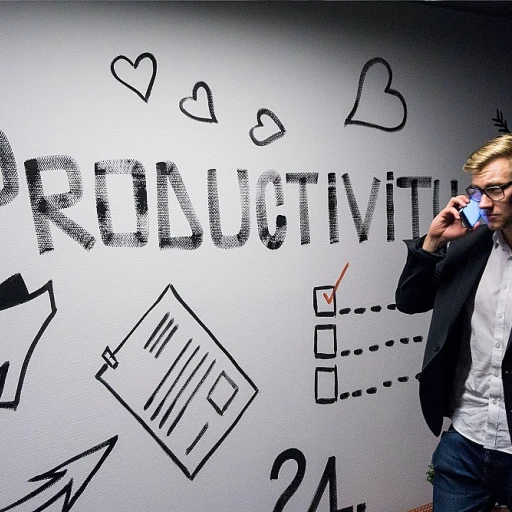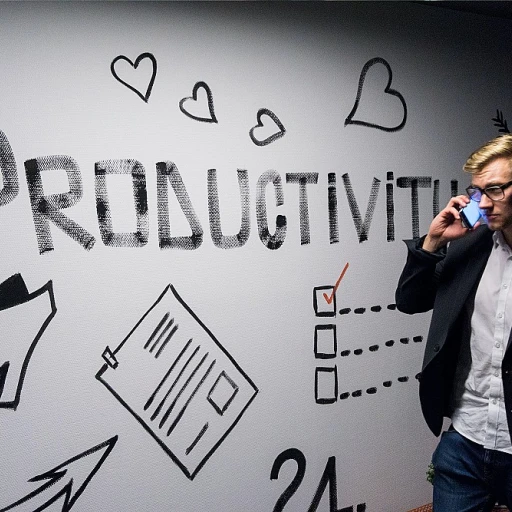
The Role of Technology in Transforming Work
The Unstoppable March of Technology
The rapid advancement of technology is revolutionizing the way we work in the Bay Area, transforming it into a future market centered around innovation. Technologies like artificial intelligence, machine learning, and data analytics are reshaping not only traditional industries but also spawning entirely new sectors.
In cities like San Francisco and San Jose, businesses are leveraging these technological advancements to streamline services and enhance organizational efficiency. The impact of such changes on work dynamics is profound, potentially reducing the necessity for physical presence in a particular location, as technology facilitates seamless remote collaboration.
Moreover, this technological acceleration is pushing for the development of real estate to accommodate tech-centric needs, further influencing housing policy and affordability in the region. As the Bay Area continues to solidify its position as a tech and innovation hub, the intersection of technology and real estate will play a crucial role in shaping the region's future work environment.
Stay ahead with insights into the industry-driven future of work and continue exploring how technology is transforming traditional workspaces.
Flexible Workspaces and Remote Work Trends
Adapting to a New Era of Workspaces
The Bay Area, known for its dynamic workplace environment, is at the forefront of flexible workspaces and remote work trends. As businesses evolve to accommodate modern demands, the rise of work pods has emerged as a viable solution. Designed to offer privacy and focus, these pods are changing how individuals interact with workspaces. Discover more about this innovation in exploring the rise of work pods. The growing prevalence of remote work has prompted a reevaluation of traditional office spaces. Companies are responding by developing coworking spaces that foster collaboration and innovation. San Francisco and neighboring regions like East Palo and Palo Alto are becoming hubs for these transformations.- The shift towards remote work reduces commuting time, contributing to lower carbon emissions in alignment with sustainability goals.
- Flexible workspaces offer affordable options for startups and freelancers, impacting the local housing market and encouraging community growth in Northern California.
- These trends support a diverse range of work styles, paving the way for inclusivity in the modern workforce.
The Importance of Lifelong Learning and Skill Development
Empowering the Workforce Through Continuous Growth
In today's rapidly evolving job market, the concept of lifelong learning and skill development has become paramount. With the ever-increasing pace of technological advancement, industries in the Bay Area, including San Francisco and San Jose, are continually reshaped. This drives the demand for workers to consistently update their knowledge and skills.
The Bay Area, renowned for its innovative tech landscape, places a high value on education and skill acquisition. Here, companies are implementing robust policies that encourage employees to expand their expertise. The October policy initiatives within the region, like those coordinated by the Metropolitan Transportation Commission (MTC), reflect a focus on workforce development by prioritizing education and training opportunities for community members.
Furthermore, the implementation of data analytics in skill development has emerged as a crucial tool for employers. By leveraging insights from big data, businesses can identify skill gaps within their teams and address them proactively. This offers an opportunity for individual growth while ensuring that organizations maintain a competitive edge in the market.
The diversity of available learning formats, from online courses to in-person workshops at local centers like those in Santa Clara or Palo Alto, has further extended access to education. By offering flexible options suited to different learning preferences, the Bay Area enhances its talent pool, making it more adaptive to changing economic landscapes.
Additionally, collaborations between educational institutions and businesses in northern California provide fertile ground for innovation. These partnerships help shape the future labor force, aligning academic programs with real-world demands and opening pathways for students to transition seamlessly into thriving careers. This symbiotic relationship boosts regional economic development and strengthens community bonds.
To prepare for the ongoing transformation of work, individuals and businesses alike must prioritize continuous improvement and skill acquisition. By planning for the future, residents can harness opportunities within an evolving job market, whether they are in urban areas like San Francisco or more suburban locations like east Palo Alto.
For a detailed exploration on how outsourced services might play a role in skill development in the future, check this insightful article.
Diversity and Inclusion in the Future Workplace
Fostering an Inclusive and Diverse Work Environment
In shaping the future of work in the Bay Area, diversity and inclusion play pivotal roles. As the dynamic region continues to transform, it demands a holistic approach to integrate diverse community perspectives successfully. This is critical for the development of innovative solutions and ensuring that work environments are representative of the larger San Francisco Bay Area community. The shift from traditional to flexible workspaces and remote work trends has catalyzed a renewed focus on inclusion. Advances in technology, highlighted by geographic dispersion and collaborative tech services, have enabled more inclusive participation in the workforce from previously underrepresented groups. This evolution requires organizations to implement policies that actively support and promote diversity, including those in places like San Jose, Santa Clara, and East Palo Alto. Moreover, the changing real estate and housing markets in Northern California are impacting the ability to create affordable living situations near centers of employment. Providing affordable housing options within the Bay Area can help support a more diverse workforce by ensuring access to job locations for all community members. Policy initiatives aimed at reducing economic disparities and fostering equity, such as those supported by the Metropolitan Transportation Commission (MTC), are therefore integral to the plan. As companies in the Bay Area look to adapt to these shifts, there's an increasing recognition of the value added by a diverse employee base. The variety of perspectives can drive creativity, foster engagement, and lead to robust problem-solving capabilities. Sustaining these efforts will require ongoing commitment and development, which will likely shape the future labor market and further urbanization impacts in regions like San Rafael and Palo Alto. The need for persistent skill development and lifelong learning is equally important to ensure that all members of the workforce can thrive in this evolving environment. This commitment to upskilling and reskilling goes hand-in-hand with inclusivity, as it empowers individuals to adapt to the changing demands of the job market and contribute meaningfully to their organizations. Navigating the complexities of diversity and inclusion requires a concerted effort to build a workplace culture that respects and harnesses the potential of every individual. As we look toward future-oriented strategies, these elements will undoubtedly help shape a prosperous and inclusive future for the Bay Area's workforce.Sustainability and the Green Economy
Navigating the Intersection of Sustainability and Economic Growth
The Bay Area, with its vibrant market economy and innovative spirit, is at the forefront of integrating sustainability into its future work models. This region, encompassing cities like San Francisco, San Jose, and the nexus around Palo Alto, is increasingly looking at how sustainability merges with economic development. Moreover, as the area faces housing challenges intensified by rapid urbanization, the need for sustainable solutions becomes imperative.
In this community, the commitment to green policies is evident through various initiatives aimed at reducing carbon footprints. The Metropolitan Transportation Commission (MTC) and urban planners are continually crafting comprehensive frameworks to promote green building practices and affordable housing solutions. These efforts aim to accommodate the growing area population without compromising environmental health.
The growing interest in sustainability also calls for innovative approaches to center urban areas around low-carbon services. This means investing in green public transportation, supporting sustainable farmer markets, and promoting climate-resilient infrastructure. The real estate sector, particularly in San Francisco and East Palo Alto, is beginning to embrace developments focused on energy efficiency and eco-friendly materials.
As the Bay Area evolves, policies and plans are paramount in ensuring these sustainable practices are embedded within the economic landscape. This endeavor requires a collective effort from community leaders, local businesses, and policymakers to create a future that balances economic prosperity with environmental stewardship.












